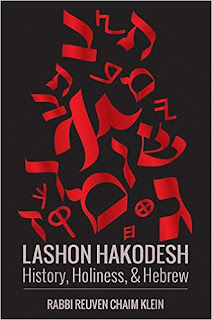Nishmat Ha-Bayit
Nishmat Ha-Bayit
Contemporary Questions on Women's Reproductive Health
Maggid/Nishmat/OU - 370 pp
The “Nishmat
Habayit” is an incredibly impressive and urgent collection over of 60 sheilot
u’teshovot related to Niddah and Taharat Hamishpacha that were authored by
Yoatzot Halacha – women who have undergone extensive training in Hilchot Nidda
in the Nishmat women’s seminary led by Rabbi Yehuda (z”l) and Chana (ly”t)
Henkin.
The sefer is divided up into the categories of pregnancy, birth, nursing, contraception, and more. The
material is exceptionally well-written, clear, and appropriate for readers of
all levels. After every question is presented, a brief answer is given. This is
then followed by a “halachic expansion” that discusses all the sources and reasonings for the ruling, from its Talmudic origins right through to modern-day poskim. Everything
is clearly explained and footnoted.
While most
of the rulings are extremely practical and within normative halacha,
there are definitely a number of rulings that will raise eyebrows. For example,
in the very first chapter, we read that a woman who sees a stain on a pad is
advised -under certain conditions- to do a bedika to confirm her status. This
seems to contradict normative halacha in which a stain found on a pad is to be completely
ignored. Doing a bedika after finding a ketem/stain could have no positive benefit
and could only cause niddus.
There is
also an extensive appendix on birth control with a surprising tolerance, if not
outright acceptance in certain circumstances, for “barrier-method”
contraceptives. This is virtually unheard of in mainstream halachic literature and discussion.
On that note, there is also a chapter in which the “morning after pill” is considered.
The chapter on how and when to delay immersion and the mitzva of onah is also somewhat brave and groundbreaking. There is certainly something for everyone who is learned in this area of halacha to agree/disagree with!
But make no
mistake. For the most part, the rulings are normative and mainstream albeit
creative and tastefully applied to modern day situations that most other sefarim
of this nature do not address. I am rarely impressed with halacha sefarim as I am with this one. It is extremely well done and it is definitely
a “must have” for the English speaking moreh hora’ah and those who want to
delve deeper into these halachic issues. While many may still not be ready for
an advanced halachic text, in so sensitive an area, to be authored by women, there
is no question that there is a sense of reverence and yirat shamayaim in
every teshuva. Teshuos chen chen.


